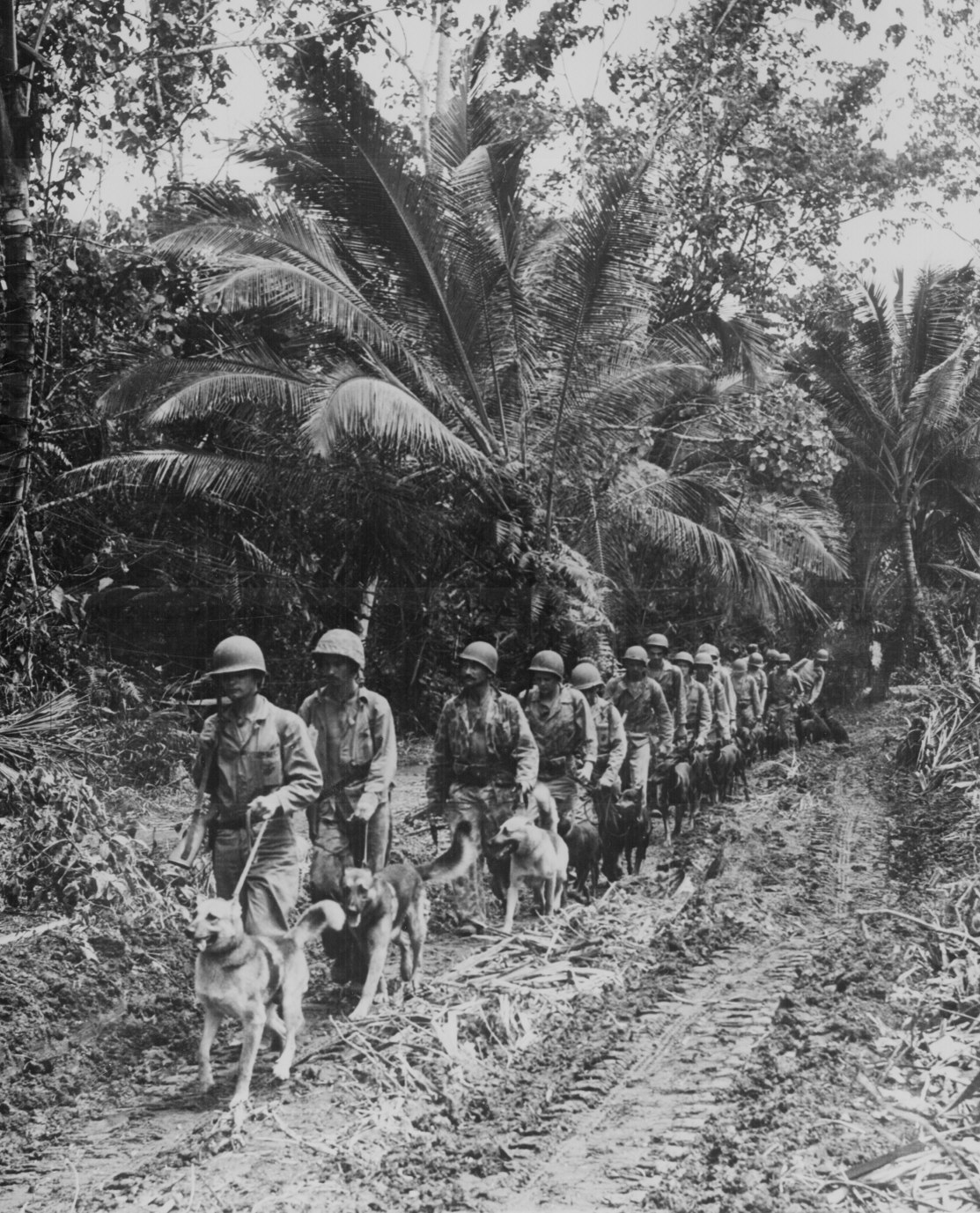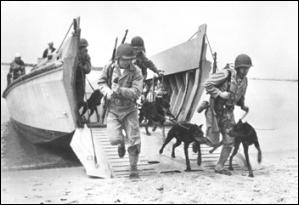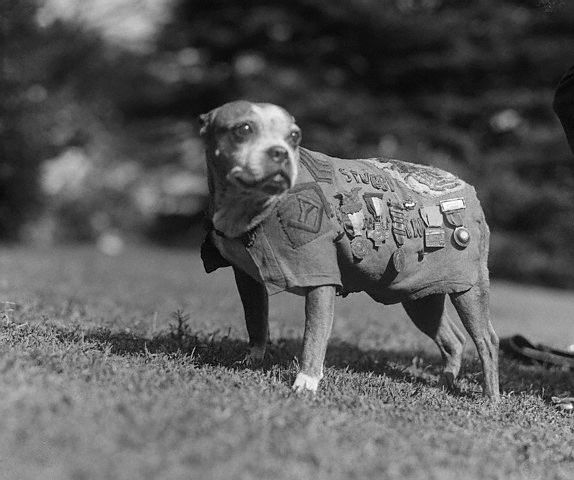
The first of the Army’s canine members were trained for sentry duty. This was deemed the most pressing need since German and Japanese submarine activity off both coasts raised concerns about the potential landing of saboteurs who might be able to gain access to military facilities and important war industries. In response to this threat, dogs were trained to alert their handlers to any strangers in their vicinity, and on command, to attack those intruders. One of the most vital missions performed by these early sentry dogs was the patrol of America’s coastlines. For this task, the QMC-trained dogs were assigned to Coast Guard handlers who used the dogs’ keen senses to patrol the beaches and other areas along the coast. Within a year, more than 1,800 dog teams patrolled the coastlines. By the end of the war, the QMC would assign 3,174 dogs to the Coast Guard.
In a report to his superiors, the commanding officer of the Marine Raider Regiment wrote that the war dog platoon had been an “unqualified success.” First on the list of the successes he recounted was: “Not one marine was killed while in a marine patrol led by a dog.” Among others were how the dogs made it impossible for the enemy to make surprise attacks at night or infiltrate their camps undetected; how the scout dogs had “alerted to enemy ambushes and snipers”; and how they were so trusted by the Marine Raiders that these men “vied nightly to dig foxholes for the handlers in order to get the handlers and their dogs to bunk down with them.”


Following the war, many dogs were returned to owners or given to their wartime handlers. This involved retraining so the dogs would be able to function safely in a peacetime civilian setting. Due to their classification as government property, any unclaimed dogs had to be sold as surplus, with the new owner footing the bill to return the shipping crate and food bowl to the Army. Still, this program allowed some civilians to purchase a well-trained and physically fit animal for a bargain price.


Recent Comments